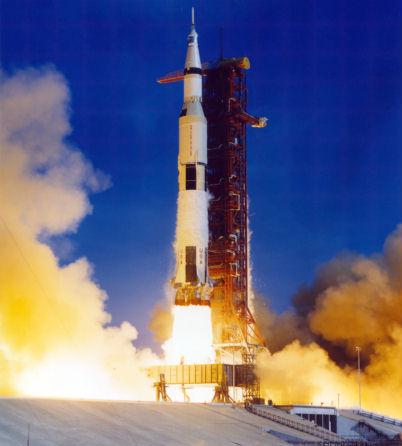Saturn V Moon Rocket (1967)
About the Design
America's Saturn V -- so named because of the five massive F-1 engines in its first stage -- was the largest successful booster system ever built. (The Soviet's N-1 may have been larger, but it failed repeatedly in test flights.) This three-stage launch system was designed specifically to take men to the Moon, and was only the second NASA booster not originally developed as a military ICBM. (The first was the Saturn V's predecessor, the Saturn 1B.)
Completely assembled, the Saturn V -- including the Apollo spacecraft and escape tower -- stood 363 feet tall (110.6 meters) and weighed over 6 million pounds (2.7 million kg.) The first Saturn V launch (Apollo IV - unmanned) took place on November 9, 1967. The last, the launch of Skylab 1, was on May 14, 1973. No Saturn V rockets have been built since. |
About the Kit
This massive kit -- which stands nearly 4 feet tall -- was an unusual product for Revell. Because of the kit's size and weight, only a select number of structural components, specifically the base, engine bells, stage end-caps, and the Apollo spacecraft system itself, were made of injection-molded plastic. The "skins" of each stage were made of thin polystyrene sheets that the builder folded into tubes and glued at one edge. These "skins" had their decals pre-printed on their surfaces.
The 3rd stage shroud for the Lunar Module had a clear plastic panel so one could see the LM within. The LM and Command modules were also released as a separate "Apollo Spacecraft" kit, and the Command and Service modules were subsequently packaged with a 1/96 scale Soyuz in 1975. This Saturn V kit has been released several times, first in 1970, then again in 1982 as a History Makers kit and in 1994 as a Selected Subjects model. This is a copy of the original 1970 model. |



